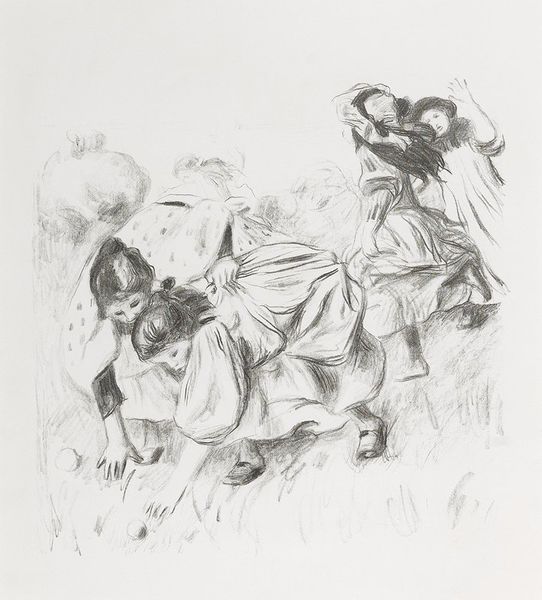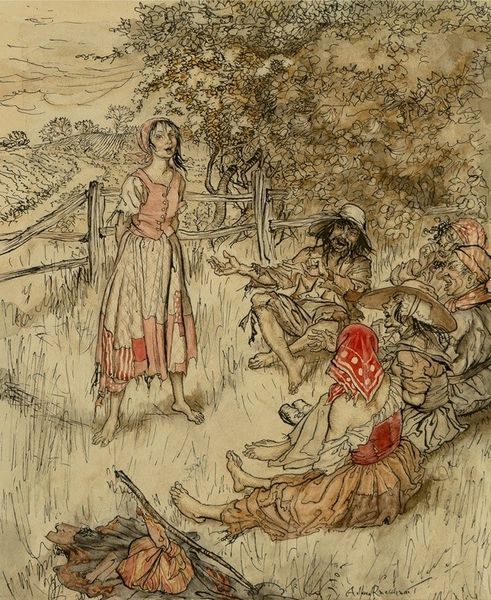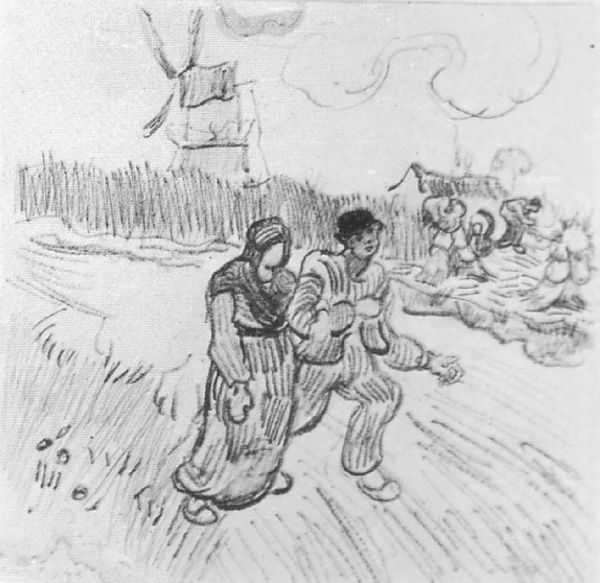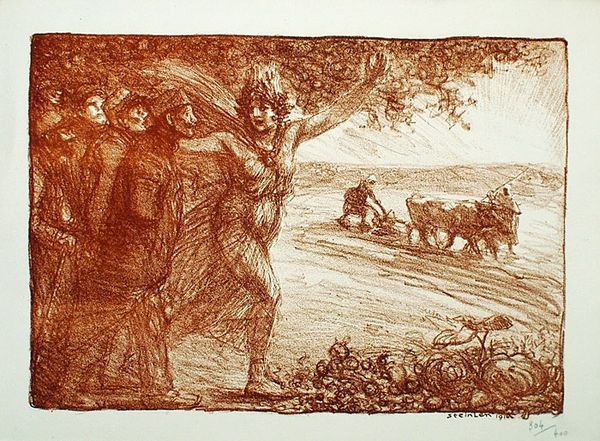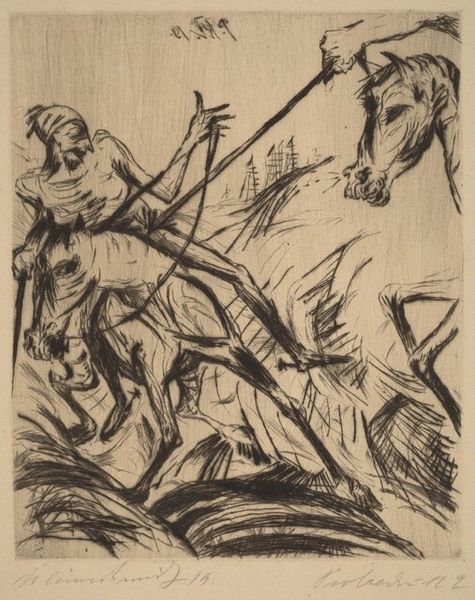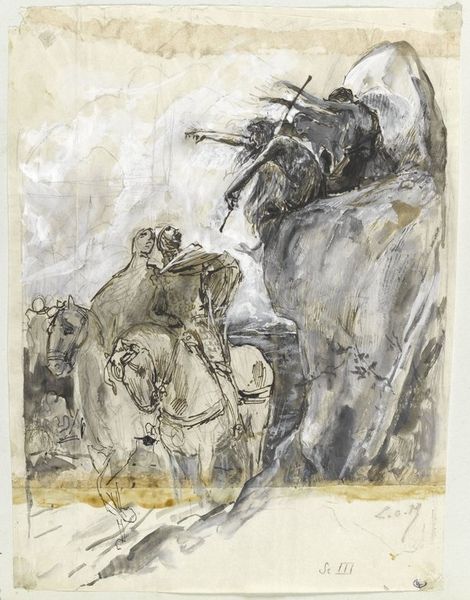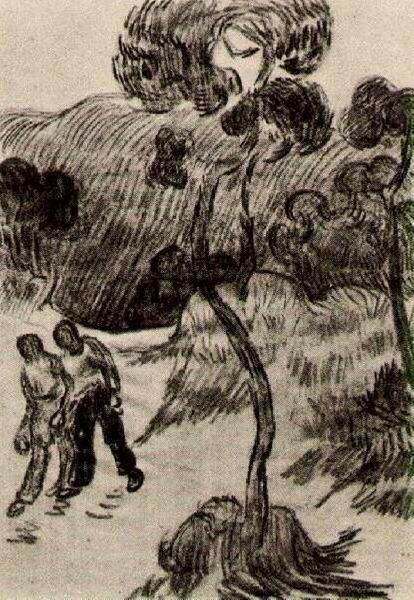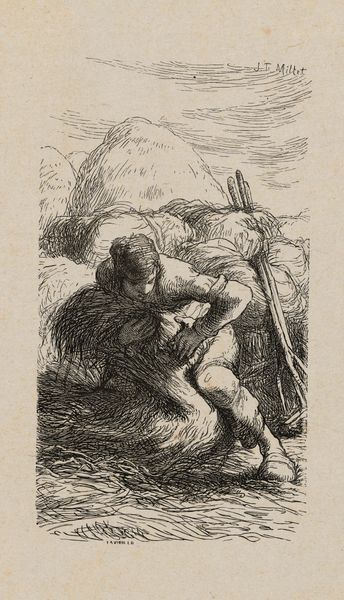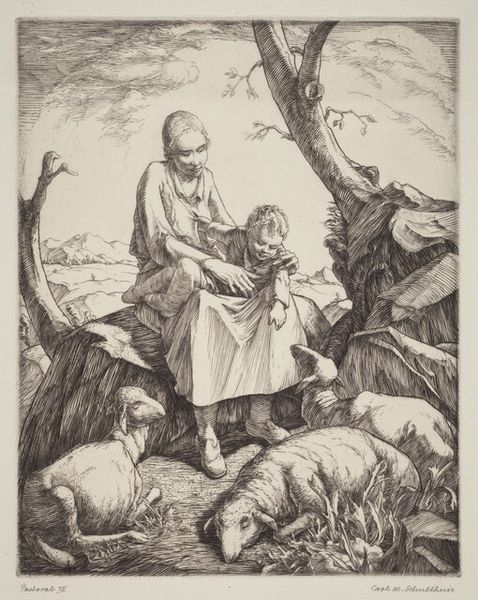
Copyright: Public Domain: Artvee
Editor: Here we have Pierre-Auguste Renoir’s "Children Playing Ball," created around 1900, using colored pencil. There’s something almost dreamlike about it...the sketch-like quality, the figures blending into the landscape. What strikes you about this piece? Curator: It's interesting that you mention the dreamlike quality. Considering the era, this piece serves as an important cultural snapshot, one that intersects with debates about the role of women. Can you imagine these figures embodying the burgeoning freedom of women at the turn of the century, depicted here in this relaxed, almost carefree setting? Editor: That’s an interesting point. I was initially just drawn to the composition, but considering it through that lens... Do you think the vagueness of the forms then, might be a deliberate choice to avoid confining these figures with strict social expectations? Curator: Precisely! Renoir, through impressionistic ambiguity, offers a vision of liberated girlhood that challenged prevailing patriarchal structures. This invites us to consider how representation plays a crucial role in social discourse and the struggle for women’s emancipation. The open field becomes a space of possibility. Editor: It reframes the artwork, moving beyond just the surface-level sweetness, and instead showing it as a commentary about women in society. That’s incredibly helpful. Curator: Glad to hear it. Seeing art as an intersection of visual elements and socio-historical context is key, I think. It's not always obvious, but always there.
Comments
No comments
Be the first to comment and join the conversation on the ultimate creative platform.

